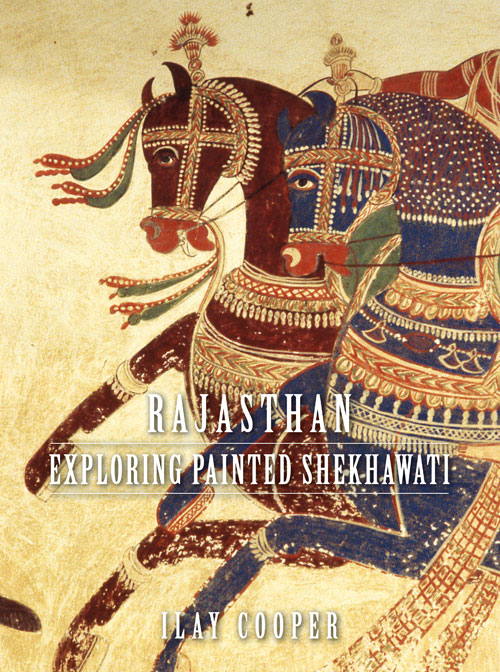|
|
The South
Asian Life & Times - SALT |
|
|||
|
Contents Feature Heritage People
Book Reviews Kaavad
Traditions of Rajasthan
- exploring
|
|
||||
|
Rajasthan By Ilay Cooper
Cooper cycled into the rarely visited tiny desert
towns of northern Rajasthan and discovered some impressive mansions, their
walls covered with vibrant paintings. On a subsequent trip to India in 1975,
he once again travelled through Rajasthan – this time to Churu district and
neighbouring Shekhawati (Jhunjhunu and Sikar districts) with a camera, he
found that such painted havelis were peculiar to small towns in those three
districts. These havelis enclosed one or more courtyards, their walls
covered with bright paintings. Later, he could find no illustrations of such
painted houses and no one seemed aware of them. Ilay settled in Churu, partly because he made
friends with Nand Kishor Chaudhary, a local shopkeeper. From there, he began
to study the buildings, their background and their paintings. This book is a
result of his painstaking research on painted havelis. The Shekhawati region,
known as the open-air art gallery of Rajasthan, lies in the roughly
triangular area between Delhi, Jaipur, and Bikaner, and encompasses the
districts of Jhunjhunu, Sikar, and Churu. A drive through this vast, barren,
almost surreal landscape, dotted with khejri trees and their outstretched
branches, can be oddly hypnotising. The wide, open uninhabited spaces seem
light years away from the madness of Indian cities. Shekhawati is
Rajasthan’s best-kept secret – there are over 2,000 painted havelis
(mansions) dispersed in its small desert towns - most were built in the mid
and late 19th century by members of the rich Marwari community of the area.
Some of these heritage mansions are even
older. The exterior and interiors of these buildings were richly decorated
with figurative and floral art in bright colours. Less was not more at the
time. Members of the Marwari community from the Shekhawati
area migrated for business reasons to distant shores of India – Calcutta and
Bombay – in the 19th century during the British Raj. Those were the
financial centres at the time and that’s where money was to be made.
Marwaris are known for their keen business sense and quite a few from these
tiny desert towns became successful and influential tycoons and
industrialists. Birlas, Modis, Piramals, Singhanias, Poddars, and Ruias are
all from Shekhawati. Back in the 19th century, these early pioneers made
their wealth in the cities and sent some of it back home to build and enrich
their havelis with art work which ranged from amorous and folk art to
mythological depiction of stories from the Ramayana and the Mahabharata. But
the earliest murals were funded by local barons. Cooper was commissioned by the Indian National Trust
for Art and Cultural Heritage (INTACH) to document the havelis and, aided by
a local teacher, Ravindra Sharma, worked from 1985 to 1987. As a result of his work and extensive travel though
the region, he wrote, illustrated and drew the maps for THE PAINTED TOWNS OF
SHEKHAWATI, the classic work, now in its third edition. This is followed now
by the richly illustrated RAJASTHAN EXPLORING PAINTED SHEKHAWATI describing
his adventures in the region. About the
author
|
|||||
|
Copyright © 2000 - 2015 [the-south-asian.com]. Intellectual Property. All rights reserved. |
|||||
